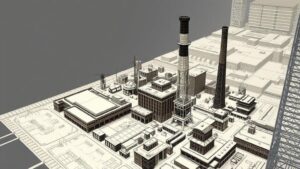Old Maps, New Discoveries: Combining Historical and Modern Resources
Old Maps, New Discoveries: Combining Historical and Modern Resources
The study of old maps offers a unique window into the past, revealing not only geographical knowledge but also cultural and political nuances of different eras. The integration of historical cartographic data with modern technological resources has led to significant new discoveries, unraveling the complexities of historical landscapes and spatial relationships. This article explores the methodologies and implications of combining ancient maps with contemporary technology, highlighting key examples and their contributions to historical geography.
The Importance of Historical Maps
Historical maps serve as vital artifacts that encapsulate the worldview of societies at particular points in time. For example, the Carta Marina, created by Olaus Magnus in 1539, illustrates the Nordic countries with intricate details that reflect contemporary knowledge of geography, flora, and fauna. The assessment of such maps not only informs historians about historical states and boundaries but also uncovers societal values and priorities.
Advancements in Technology
In recent years, advancements in technology, particularly Geographic Information Systems (GIS) and remote sensing, have revolutionized how historians and geographers analyze historical maps. GIS enables the digitization and layering of historical cartographic materials with modern geographic data, allowing for comprehensive spatial analysis. Remote sensing technologies, such as LiDAR (Light Detection and Ranging), can reveal previously hidden features of the landscape that may have influenced historical settlements or transportation routes.
Case Studies: Old Maps and New Discoveries
1. The Use of GIS in Mapping Ancient Rome
One of the most notable applications of GIS is in the mapping of ancient Rome. By combining historical maps with modern geospatial data, researchers have produced a highly detailed reconstruction of the Roman Empire at its peak around 117 AD. According to studies conducted by the University of California, Berkeley, these findings suggest that ancient Rome’s urban planning was significantly influenced by natural topography, which was previously underestimated.
2. Investigating Colonial Cartography in North America
Another compelling example is the use of historical maps to understand colonial America. Researchers have analyzed maps from the 18th century, such as John Mitchells map of 1755, to track land use changes. Through GIS tools, researchers have discovered patterns of land appropriation that coincide with military conflicts and treaties, revealing how colonial powers reshaped the landscape. A study by the University of Virginia highlighted that these maps could accurately predict population distribution trends in the following centuries.
Challenges and Limitations
Despite the promise of combining historical maps with modern technology, challenges remain. Issues such as the preservation of the original artifacts, variations in historical data accuracy, and the potential misinterpretation of cartographic symbols can hinder research. For example, the interpretation of the T and O shape of medieval maps may lead to misconceptions about the travelers’ understanding of the world. So, a critical approach must be maintained, ensuring context is considered when analyzing old maps.
Future Directions in Cartographic Research
Looking ahead, the field of historical cartography is likely to benefit immensely from ongoing technological advancements. Innovations in machine learning and data analytics are poised to enhance the ability to interpret and manage the vast datasets associated with historical maps. Also, collaborative platforms that facilitate the sharing of digitized maps can lead to interdisciplinary studies, bridging the gap between historians, geographers, and data scientists.
Conclusion
The fusion of old maps with new technology presents a profound opportunity for scholarly inquiry. By leveraging modern resources, researchers can unearth insights that reframe our understanding of history and geography. As advancements continue, the potential for impactful discoveries will only grow, encouraging a richer appreciation for the complex interplay of societies across time. study of historical maps is not just about where we came from but also about how we can shape our understanding of the present and approach the future.
Actionable Takeaways
- Engage with local archives or libraries that house historical maps to better understand the spatial context of your area.
- Use GIS tools in your own research to analyze historical data in a spatially relevant way.
- Consider interdisciplinary approaches by collaborating with experts in technology, geography, and history for a more comprehensive study.



